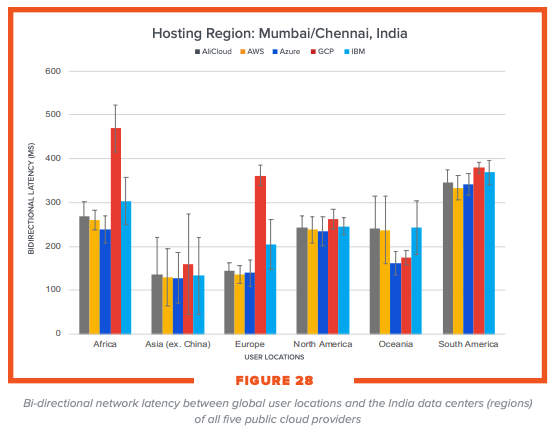COVID-19 and Beyond: Determining the Right Cloud for Your Business
As businesses contemplate cloud migration strategies for today’s ‘new normal’ of remote workforces, several considerations need to come into play.
July 27, 2020

These last few months, cloud technology has played a critical role in helping companies power remote business. Being able to quickly spin up services such as employee VPNs has proven effective to manage some of these overnight changes, and while Internet Service Providers have struggled at times with spikes in user outages, cloud providers, in general, have held up well during these first transitional months of the pandemic, recording few outages comparatively speaking.
For many organizations, the pandemic has quickened the pace of cloud migration conversations. The process for selecting the right cloud provider based on business needs is a nuanced consideration, and there are a number of deliberations that companies must examine before diving in. Performance is one of them and based on annual cloud benchmark research, examining the performance of Amazon Web Services (AWS), Google Cloud Platform (GCP), Microsoft Azure (Azure), IBM Cloud, and Alibaba Cloud, a few key indicators have revealed themselves as particularly impactful. I’d like to share a few of them here to help organizations as they develop their enterprise cloud migration strategy.
Your cloud is as strong as your weakest Internet connection
The enterprise technology stack, as we know, it has changed. The cloud is increasingly taking the role of the new data center and the Internet, as the delivery mechanism for cloud computing and SaaS, is becoming the new network. When it comes to cloud architectures, there are essentially two paradigms of network infrastructure: Internet-intensive, which primarily relies on the Internet for user-to-hosting-region traffic, and backbone-friendly, which leverages the cloud provider’s private backbone network for user-to-hosting-region traffic. AWS and Alibaba Cloud, for example, are Internet-intensive, while GCP and Azure are more backbone-friendly networks. IBM Cloud is the only provider to alternate between the two, depending on the hosting region.
Because the Internet is a best-effort medium and made up of a constellation of ISP networks that are vulnerable to security threats, DDoS attacks, and outages, it stands to reason
that relying on the Internet increases unpredictability in performance and creates risk for cloud investments. On the other hand, architectures that extensively use a private backbone
network are likely to see improved performance predictability from an end-user perspective, but at an additional fee.
Using a private backbone isn’t always faster
For companies that have opted to leverage cloud providers' private backbone networks, however, substantiating any performance benefit can be a difficult task, and customers are often left wondering if it’s really worth the additional cost. The answer varies and is often subject to a business’ unique regional pairings. Tests have even shown that the AWS Global Accelerator, for example, performed as promised in a majority of pairings, but in some circumstances, the benefit was nominal or even worse than baseline Internet measurements.
When considering the best cloud provider for your business, it’s important to understand cloud vendors’ approach to user traffic transport to hosting regions and determining what your own risk tolerance is.
Cloud performance varies between regional pairs
Another critical performance indicator is inter-region performance, especially for enterprises adopting a tiered multi-region infrastructure. Tiered architectures are often essential, but geographical expanse can incrementally affect network latencies and impact end-user experience. For instance, the average bidirectional latency between each cloud providers’ London and Mumbai data centers shows that Alibaba Cloud and AWS perform at least 10% better than the average Internet path between those exact two locations. While, GCP was 30% slower, despite using their own internal backbone.

20200723 AnnaV Thousandeyes.png
To choose the best regions to load-balance applications, attention needs to be paid to the network connectivity and latency across geographical regions. Knowing which region pairs perform better - and where anomalies among cloud providers exist - can help determine how to distribute applications across regions to best serve customers.
Migrating to the cloud during COVID-19 and beyond
The promise and the value of the cloud is undisputed, and thankfully, in these extraordinary times, when businesses needed it the most, cloud vendor networks have shown to perform well. Though there were outage spikes, especially in mid-March as many parts of the U.S. adjusted to work-from-home lock-downs, it seems cloud providers’ long history of infrastructure investment and efforts to optimize performance has served us well.
As businesses continue to contemplate cloud migration strategies to accommodate today’s ‘new normal’ of remote workforces and online customers, several considerations need to come into play. Rather than relying on assumptions or gut-feelings to guide the planning and operational stages of choosing a cloud vendor, it’s imperative to start with real performance measurements and indicators to understand how and where they differ, and why it matters to you, your employees, and your customers.
About the Author
You May Also Like




